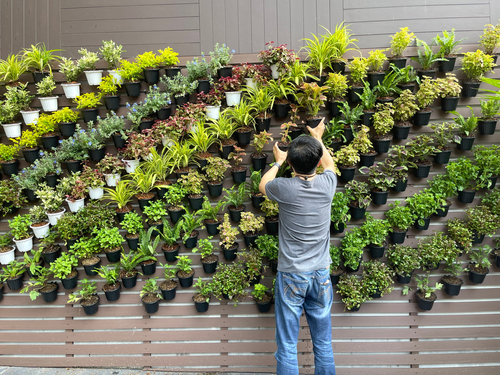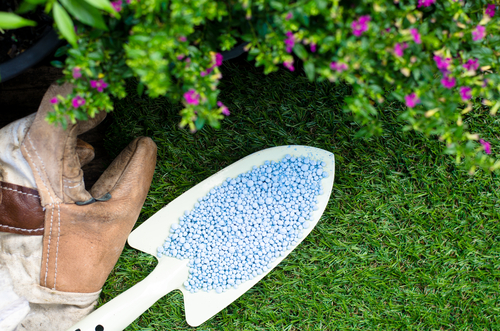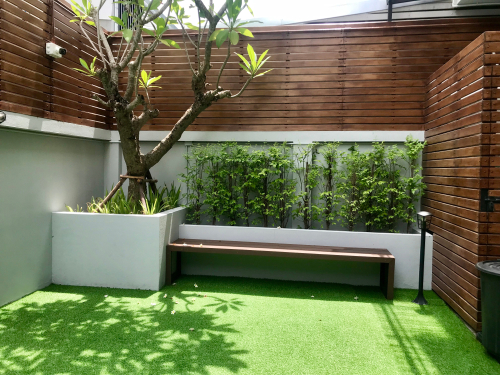
Top Landscaping Trends in Singapore
June 26, 2024
How to Achieve and Maintain a Healthy Lawn
July 24, 2024How to Plan and Design a Roof Garden

How to Plan and Design a Roof Garden
How to Plan and Design a Roof Garden? A roof garden is an innovative and increasingly popular solution for urban environments where ground space is limited.
These gardens not only enhance the aesthetic appeal of buildings but also offer numerous benefits such as improved air quality, additional green space, and increased property value.
This article provides a comprehensive guide on how to plan and design a roof garden, covering all essential aspects from feasibility assessment to maintenance planning.
Assessing Feasibility and Structural Considerations
Before embarking on your roof garden project, it is crucial to assess the structural integrity of your roof.
Consult with a structural engineer to evaluate the load-bearing capacity and ensure that the roof can support the additional weight of soil, plants, and garden infrastructure. Check for proper waterproofing to prevent water damage to the building.
Navigating local building codes and regulations is a vital step in the planning process. Contact local authorities to understand zoning laws and permit requirements.
Ensuring compliance with these regulations will help you avoid legal issues and ensure the safety of your roof garden.
Planning Your Roof Garden
Setting Objectives and Goals
Define the purpose of your roof garden to guide your design choices. Whether you aim to create a relaxation space, a vegetable garden, a decorative space, or a combination, having clear objectives will help in the planning process.
Determining the Layout
Create a detailed layout plan for your roof garden, considering access points, walkways, seating areas, and plant beds. A well-thought-out layout will maximize space and functionality while maintaining a pleasing aesthetic.
Budget Planning
Set a realistic budget for your roof garden project. Estimate costs for materials, plants, labor, and maintenance. Budget planning will help you manage expenses and avoid overspending.
Choosing the Right Plants

Choose plants that thrive in rooftop conditions. Consider drought-tolerant plants, native species, and lightweight plants that can withstand exposure to wind and sunlight. Examples include succulents, herbs, and ornamental grasses.
Singapore’s tropical climate requires plants that can handle full sun, high humidity, and occasional heavy rainfall. Select plants accordingly to ensure they flourish in the specific environmental conditions of your rooftop.
Organize your roof garden into different planting zones based on the needs of various plants. Group plants by water and light requirements, use containers for flexibility and incorporate raised beds for vegetables.
Designing for Aesthetics and Functionality
Focus on aesthetics by using a mix of textures, colors, and heights to create visual interest. Add decorative elements such as garden art, pathways, and lighting to enhance the overall look.
Incorporate functional features like seating areas, pergolas for shade, storage spaces, and water features. These elements will make your roof garden more usable and enjoyable.
Maximize the limited space by using vertical gardening techniques, selecting multi-functional furniture, and incorporating built-in planters. Efficient use of space will make your garden look spacious and organized.
Ensuring Proper Drainage and Irrigation
Proper drainage is critical to prevent water accumulation and damage to the roof structure. Install a drainage layer using permeable materials and ensure the roof has a proper slope to facilitate water runoff.
An efficient irrigation system is essential for maintaining plant health. Consider installing drip irrigation systems, using rainwater harvesting, and setting up automated watering systems to ensure consistent and adequate watering.
Protect the building structure by using waterproof membranes and applying sealants. Regularly inspect the roof for leaks and address any issues promptly to maintain the integrity of your roof garden.
Soil and Planting Medium

Select lightweight soil mixes that provide good drainage and adequate nutrients for plants. Incorporate organic matter to improve soil health and structure.
Consider using alternative planting mediums like coco peat and hydroponics. These mediums reduce the overall weight of the garden and improve water retention, making maintenance easier.
Soil Depth Considerations
Determine the correct soil depth for different plants. Larger plants and trees require deeper soil, while ground covers and shallow-rooted plants need less depth. Raised beds can help provide adequate soil depth for vegetables and other deep-rooted plants.
Implementing Sustainable Practices
Incorporate sustainable practices to reduce the environmental impact of your roof garden. Use organic fertilizers, compost kitchen and garden waste, and minimize chemical use to promote a healthy ecosystem.
Enhance energy efficiency by using solar lighting, installing reflective surfaces, and creating windbreaks. These measures can help reduce energy consumption and create a more comfortable environment.
Adopt water conservation strategies such as using drought-tolerant plants, installing efficient irrigation systems, and utilizing mulching techniques to retain soil moisture.
Creating a Maintenance Plan
Regular maintenance is crucial for a thriving roof garden. Schedule tasks such as watering, weeding, pruning, and pest control to keep your garden healthy and attractive.
Adjust your maintenance routine according to seasonal changes. Modify watering schedules, fertilize during growing seasons, and protect plants from extreme weather conditions.
Regularly monitor plant health and address issues promptly. Check for signs of disease, ensure plants receive proper nutrition, and adjust care routines as needed to maintain a healthy garden.
Enhancing Usability and Comfort

Enhance the usability of your roof garden by adding seating, shade structures, and lighting for evening use. These features will make the space more comfortable and enjoyable.
Safety is paramount in roof garden design. Install sturdy railings, ensure non-slip surfaces, and provide adequate lighting to prevent accidents and ensure a safe environment.
Design your roof garden to be accessible to everyone. Ensure easy access via stairs or lifts, create wide pathways, and design mobility aids to accommodate all users.
How to Plan and Design a Roof Garden – Conclusion
Planning and designing a roof garden involves several steps, from assessing feasibility and structural considerations to choosing the right plants and ensuring proper maintenance.
By following these guidelines, you can create a beautiful and functional roof garden that enhances the aesthetic appeal, improves air quality, and provides additional green space in urban environments.
Embrace the benefits of a well-designed roof garden and transform your rooftop into a thriving oasis. Get started today!
Are you seeking professional and reliable landscaping contractors in Singapore? Contact us today!




